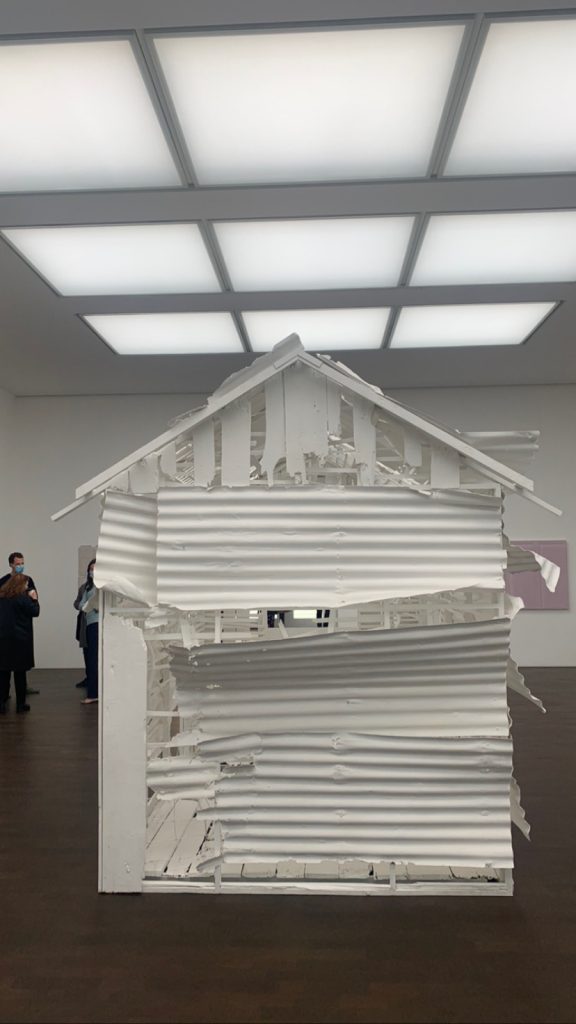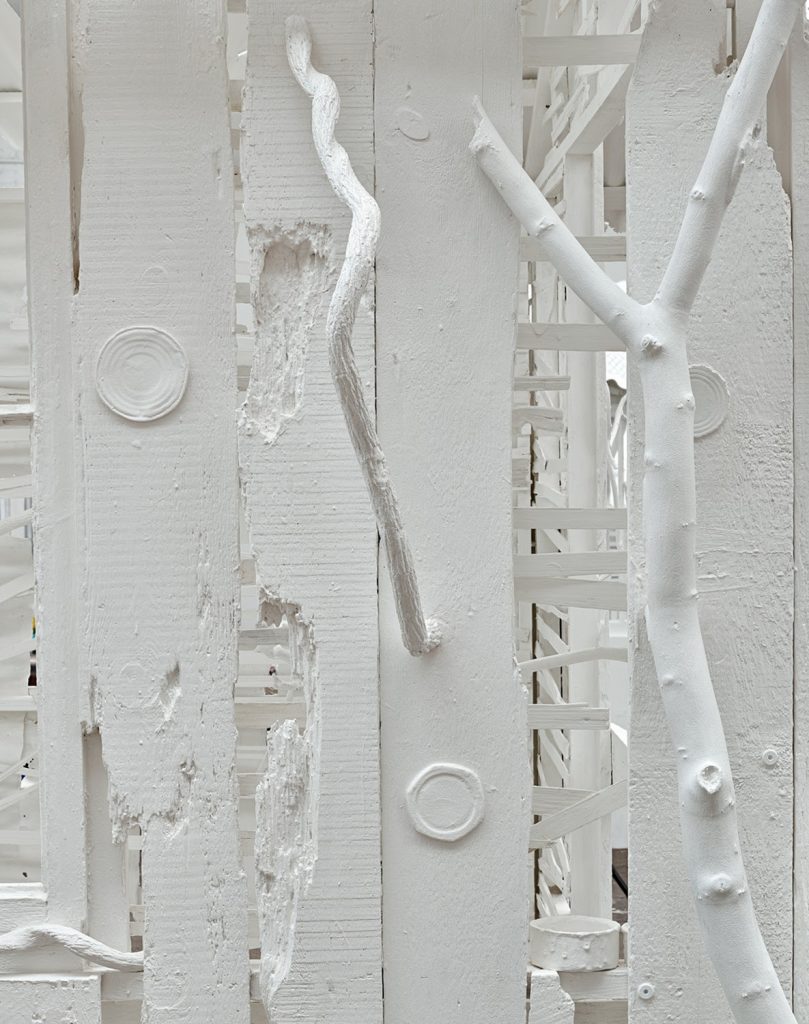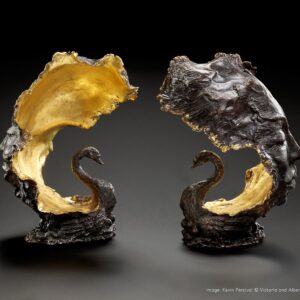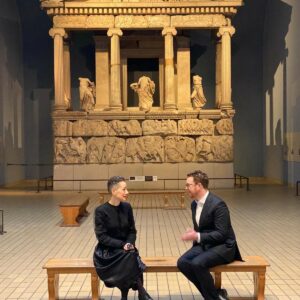
Rachel Whiteread’s latest exhibition, “Internal Objects’, is an ode to lost bodies and the ghosts of our language. Showing now at Gagosian in London, Whiteread’s sculpture gives a unique incarnation to the uncanny, through its focus on the specific process by which familiar shapes and objects can be made alien to their observer. Through her minimalist reduction of the detail presented to visitors, in blanketing her work in an omnipresent coating of sheer white paint, she has developed a path to agitation through the lack of information offered to her audience.

Dominating the exhibition space, her two most prominent works featured in “Internal Objects” present this function with a haunting authority. Unbound by the limitations of a frame, the paired “Poltergeist” and “Doppelgänger” are composed of two freestanding structures in varying states of disrepair. Quite unlike her impenetrable concrete monuments of previous years, these dwellings have been cobbled together from a variety of scraps; curling branches, chicken wires, and splintered wooden planks. They are battered, and exposed, and their relationship develops a progressive narrative of destruction; as “Doppelgänger” fails to replicate its predecessor, striving towards disrepair but falling short of even that, as if torn apart by a hurricane. Whiteread herself references the work as a ‘change in her language’, nodding towards a self-reflexive tone to these sculptures, perhaps revealing the more fragile organs of previous pieces, though the manner of their construction seems to reach far beyond this.
No longer unified blocks of concrete, her style has been atomised, drawing attention to how “Poltergeist” and its twin have been constructed; aggregated from a myriad of individual parts, now consumed by their new body and formatted under the same palette. They have been processed quite explicitly by Whiteread’s own artistic vocabulary: a total lack of colour. French psychoanalyst Jacques Lacan once lectured that the mind identified every object against the entirety of our past experience, as light reflected from a mirror most subtly changes its frequency as it bounces away. Reflecting across our memories, our perception is built increasingly within a unique language, founded on how their every detail interacts with our past. The uncanny of Whiteread’s artwork is brought about by a frustration of this mechanism, through a limitation of the details available to her audience, that would otherwise allow us to normalise our encounter with her sculpture. Their absolute coating in whiteness, the covering of their otherwise ready-made qualities, presents what remains as presiding over an abundant sense of loss.

If there is a poltergeist haunting her exhibition, it is the ghost of those internal objects, beneath the paint, and what they mean to us, as an audience before the impetus of the artist. Had Whiteread presented the same structures without the paint, we would have been able to better grasp what stood before us, and these pieces would lose their impression of incompleteness, experienced entirely within our own grammar. However, through her imposition as creator, distilled into an embodiment of the tempestuous act itself, Whiteread has provided us with such objects from the perspective of the other. They have been spoken through her dialect, through white paint.
By drawing attention to this process of loss, both concerning the components of her sculptures and destruction of shelter that characterises the forms themselves, her work speaks most powerfully to those voices that go unheard; caught up in the turmoil of another’s language, and without retreat. If there is an anxiety at the heart of the work, it is crystallised in this lack of shelter, the erasure of sanctuary, and the power of something that can reshape everything we know, in the brewing of its storm.
RACHEL WHITEREAD Internal Objects –June 5th, 2021 Gagosian Grosvenor Hill London gagosian.com






